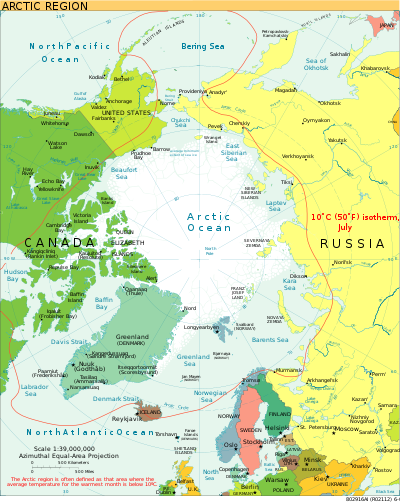
Back مناخ القطب الشمالي Arabic Арктычны клімат Byelorussian সুমেরুর জলবায়ু Bengali/Bangla Arkta klimato Esperanto Arktiline kliima Estonian اقلیم شمالگان Persian Climat de l'Arctique French Iklim Arktik ID Klimaat van het noordpoolgebied Dutch Северный Ледовитый океан#Климат Russian

The climate of the Arctic is characterized by long, cold winters and short, cool summers. There is a large amount of variability in climate across the Arctic, but all regions experience extremes of solar radiation in both summer and winter. Some parts of the Arctic are covered by ice (sea ice, glacial ice, or snow) year-round, and nearly all parts of the Arctic experience long periods with some form of ice on the surface.
The Arctic consists of ocean that is largely surrounded by land. As such, the climate of much of the Arctic is moderated by the ocean water, which can never have a temperature below −2 °C (28 °F). In winter, this relatively warm water, even though covered by the polar ice pack, keeps the North Pole from being the coldest place in the Northern Hemisphere, and it is also part of the reason that Antarctica is so much colder than the Arctic. In summer, the presence of the nearby water keeps coastal areas from warming as much as they might otherwise.